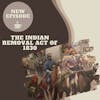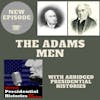James McCune Smith

The first African American to earn a medical degree, James McCune Smith was a leader black intellectual, counting friends like Frederick Douglass and Henry Highland Garnet. He was known for both his scientific knowledge and his reformist activities during his lifetime and wrote extensively for Douglass' newspaper.
However, today most are unfamiliar with Smith or his accomplishments. So this week, I am focusing on Dr. James McCune Smith. Who was he? And why don't know we know more about him?
SOURCES
Banner, Rachel. "Thinking Through Things: Labors of Freedom in James McCune Smith's "The Washerwoman"." ESQ: A Journal of the American Renaissance 59, no. 2 (2013): 291-328. doi:10.1353/esq.2013.0023.
Greene, Bryan. “America’s First Black Physician Sought to Heal a Nation’s Persistent Illness.” Smithsonian Magazine. February 26, 2021. (LINK)
“James McCune Smith.” CHAAMP Resources. University of Virginia. (LINK)
Morgan, Thomas M. “The education and medical practice of Dr. James McCune Smith (1813-1865), first black American to hold a medical degree.” Journal of the National Medical Association vol. 95,7 (2003): 603-14.
“Radical Abolition Party Formation.” Freethought Trail. (LINK)
“The colored man must do impracticable things before he is admitted to a place in society. He must speak like a Douglass, write like a Dumas, and sing like the Black Swan before he could be recognized as a human being.” James McCune Smith, 1854
Welcome to Civics and Coffee. My name is Alycia and I am a self-professed history nerd. Each week, I am going to chat about a topic on U.S history and give you both the highlights and occasionally break down some of the complexities in history; and share stories you may not remember learning in high school. All in the time it takes to enjoy a cup of coffee.
INTRO MUSIC
Hey everyone, welcome back.
Last episode, I shared the story of the first person to break the gender barrier in medicine with the life of Elizabeth Blackwell. As I teased at the end, I wasn’t quite finished discussing people breaking new ground. Born in New York in 1813, James McCune Smith was one of the most well respected and well known black intellectuals of his lifetime. The first African American to earn a medical degree, Smith was known for his medical knowledge and his support for advancing the lives of his community. Everyone from Frederick Douglass to Henry Highland Garnet solicited his advice and spoke of his talents.
But despite the notoriety he enjoyed during his lifetime, today there remains a gap in the literature about the life, legacy, and impact of James McCune Smith. So, this week I am shining a light on this undercovered person from history. Who was Dr. Smith? How did he obtain his medical degree? And why isn’t there more acknowledgment of his legacy?
Grab your cup of coffee, peeps. Let’s do this.
James McCune Smith was born in the city of New York in 1813, several years shy of the state’s slavery abolition law set to go into effect in 1827. James described his mother, Lavina Smith, as a quote “self-emancipated bondswoman” end quote. He appears to have had no relationship with his father, who may have been a white merchant by the name of Samuel Smith. The name of his father remains in doubt, however, given that scholars have been thus far unable to track down any individual matching that name in the city of New York around Smith’s birth. Little is known about Smith’s early years, however he did attend the African Free School Number 2 located on Mulberry street in the heart of the city. He could not know it at the time, but Smith was in quite the prestigious class, counting famed intellectual Henry Highland Garnet as a classmate.
Smith’s education was a bit different. The schoolmaster, Charles C Andrews, put into practice a system wherein the students taught each other. This instilled a level of confidence in the student body and provided an opportunity for the students to flourish. While attending school, Smith worked on mastering several languages, becoming bilingual in French and proficient in several other languages.
Smith displayed considerable intelligence as a young student, so much so that he was asked to give an abolitionist speech at just 11 years old during a visit by the Marquis de Lafayette. Upon his graduation at 15, Smith apprenticed to be a blacksmith before eventually deciding to attempt medical school. He applied at both Columbia and Geneva, only to be rejected on account of his race. Luckily for him, several white abolitionists saw his potential and raised funds to send Smith overseas to earn his medical degree.
Securing passage to attend Glasgow University, Smith departed New York on August 16, 1832 aboard the ship Caledonia, making sail towards Liverpool. Upon his arrival, Smith was welcomed by members of the London Agency Anti-Slavery Society and could, for likely the first time in his life, relax a bit in public. While London wasn’t without its own issues and prejudice, Smith enjoyed much more freedom - including taking a public stroll with a white woman - something unthinkable in the United States. After a few weeks of rest, Smith continued on his journey, boarding a steamer on September 15th. Smith leaned into the abolitionist sentiment he found overseas, becoming a member of the Glasgow Emancipation Society.
Smith’s intelligence served him well while at Glasgow, and he quickly earned his Bachelor’s, Master’s and Medical Degree in the span of just five years, graduating with honors in 1837. Like last week’s episode, Smith was not the first black american to practice medicine. However, with a medical degree, Smith could now do so in an official capacity. It would be another decade before another black man followed in Smith’s footsteps, with David J. Peck earning his medical degree at Rush Medical College in 1847 and almost three decades before a black woman, Rebecca Crumper Lee, earned a medical degree, which she did in 1864.
Also in line with Elizabeth Blackwell’s experience, Smith traveled to London and Paris once he completed his medical education to further his training. Medical degree in hand and training behind him, Smith made the journey back to the United States where he opened a small practice on Chapel Street, treating both black and white patients. Despite his intelligence and training, Smith was refused entry into the local medical societies and barred from the then nascent American Medical Association.
Not to be deterred, Smith continued on with his practice and opened up the first black-owned pharmacy. He also took on the additional role of intellectual leader and guide. He taught remedial classes out of his home, covering subjects like reading, writing, and basic arithmetic. His first case study, which looked at ptyalism (TILE ISM), had to be presented by another doctor, a white doctor, at the New York Medical & Surgical Society. Smith’s second paper, which looked at the effects of opium on female menstrual cycles, was published in the New York Journal of Medicine, making him the first Black physician to have a paper published in a medical journal. He worked tirelessly to challenge the belief that Black Americans were biologically inferior, leveraging statistical analysis and scientific inquiry to refute such racist claims like emancipation put African Americans in worse positions than those living as slaves in the south.
On a personal note, Smith found love and married Malvina Barnet who attended the Rutgers Female Institution. Together, the couple had five children, with four living to adulthood. I was unable to find too many additional details about his family other than given the fact that both Malvina and James were of mixed race, their children quote unquote passed as white and began to identify as such for the remainder of their lives.
Whatever Smith’s training or personal pursuits, he faced significant pressure. Referred to by the black theologian Alexander Crummell as the quote: “most learned negro of his day,” end quote, Smith carried a tremendous amount of weight on his soldiers. A man who received some of the best education available was seen and treated by his community as the shining beacon, the one who would single handedly improve the plight of African Americans in the United States by his actions and demonstrated intellectual capacity.
While Smith rose to these expectations by being an active member in the abolitionist community and challenging racial stereotypes debunking pseudo science, the pressure must have been exhausting. In reviewing his accomplishments and his work, I was reminded of prior episode subject Phyllis Wheatley. Like the esteemed author, Smith took on former president Thomas Jefferson’s claim that black americans were inherently inferior to whites. Smith gave a lecture, titled the The Fallacy of Phrenology where he argued that head shape and size had nothing to do with intelligence.
He challenged racist beliefs of black inferiority directly, publishing scientific papers shredding the junk science about his community’s intellectual abilities and indirectly by simply existing. He was a man who, despite the circumstances of his birth and the roadblocks put in his path, earned three separate degrees and spent his life uplifting the lives of others. I imagine he was distinctly aware of the expectations placed on him and sought to live in such a manner that served to both provide for his family while also uplifting the surrounding community. In an article reviewing the life and legacy of Smith, historian David Blight argued that Smith faced a dual burden - he had to consistently be a shining example of black excellence while also acting as a fierce champion for black people.
While we will never know Smith’s internal feelings about the level of pressure placed upon him, from the outside it seemed he relished in the responsibility. He worked tirelessly to improve the lives of northern black americans, feeling that the abolitionist movement was overly focused on the plight of the southern slave. For Smith, the key to uplifting the black community was in education. Throughout his life Smith remained committed to the education and mentorship of African Americans, paying special attention to the children who he believed could successfully challenge the stereotypes of black inferiority. For a couple of years beginning in 1853, Smith tried to establish a black industrial college. His hope was to create an educational institution that would provide a place of opportunity - someone could learn about farming and agriculture, but could be equally trained to join the legislature. Unfortunately, he was unsuccessful. While a major supporter of increased education, Smith was also pragmatic. He saw the benefit of physical labor and felt that labor was also tied to intellectual capacity.
Smith was also active in the reform community, serving as the main speaker at the annual American Antislavery Society meeting, overseeing the finances of the Society for the Promotion of Education Among Colored Children as their treasurer, and establishing the Statistics Institute which was considered a leading literary society. Smith also worked to relocate thousands of Black americans to upstate New York, falling short of his goal. Like many of his community, Smith became disillusioned with the white abolitionist community, believing that despite their best intentions, those fighting for emancipation could never truly understand the totality of the impact of slavery on the black community. He went so far as to criticize Garrisonians, the powerful group of William Lloyd Garrison loyalists. He also wasn’t opposed to leveraging violence to achieve true equality and freedom. As he wrote in 1856 quote: “our white brethren cannot understand us unless we speak to them in their own language. They recognize only the philosophy of force,” end quote.
As I mentioned previously, Smith traveled in the same circles as the famed Frederick Douglass and Henry Highland Garnett, often writing for Douglass’ newspaper under the pen name of Communipaw. Unsurprisingly, Smith was multi-talented and submitted a series of literary sketches to Douglass’ paper sharing the lives of black laborers - yet another way he sought to undercut the notion that blacks were inferior. In 1855 he, along with Douglass, Gerrit Smith, and John Brown, established the Radical Abolitionist Party. This short lived party emerged just as other abolitionists gave up on trying to put forth political candidates who championed their cause. While the party was short-lived, it marked the first time African Americans ran a political convention.
Frederick Douglass was a great admirer of Smith’s writing quote: “no man in this country more thoroughly understands the whole struggle between freedom and slavery than does Dr. Smith,” end quote and considered Dr. Smith to his most important influence. Given his own life experience, Smith was a proponent of self-reliance, writing white abolitionists were well intended, but that ultimately the quote “moving power rests with us,” end quote. In fact, he was so respected by his peers that both Douglass and Henry Highland Garnet asked him to write introductions to their memoirs, a request he fulfilled.
When not working in a reformist capacity, Smith dedicated his time to medicine and improving the lives of the Black children of New York. He was appointed as the treating physician to the Colored Orphan Asylum in 1846. The facility, located at the corner of 5th Avenue and 44th street, was the home for several young children who were malnourished and undereducated. Smith initially had to walk to the facility, some seven miles one way, due to his inability to board public transit. In response, the board approved a stipend to hire a private driver which was in addition to his annual salary. He made several improvements while on staff, including introducing better containment strategies for communicable diseases. Smith stayed on staff with the orphanage for nearly twenty years and only fled New York after the draft riots in 1863 where 175 people lost their lives.
Dr. Smith died young, at just 53 years old, in 1865 from congestive heart failure. Despite his brief time on earth, he accomplished a great deal and worked to ensure he left the community in a better place than he found it. So, given all of this, why isn’t James McCune Smith a household name like his colleague Frederick Douglass?
Unfortunately, I do not have a definitive answer. It isn’t for lack of writing, as Dr. Smith published several scientific papers, broke new ground in statistical analysis, and wrote several newspaper articles. And it isn’t for some shameful personal act - at least none in the public record - that would prompt a community to try to forget his legacy. From all accounts I’ve read, Smith was a well-respected, highly regarded intellectual and sterling representative for his community. As historian David Blight asserts, Smith’s life quote: “became, above all else, a quest for learning, liberty, and self-definition in a society openly hostile to the very presence of a learned black man,” end quote.
The only conclusion I can come to based on what I have read is that Smith posed too big a challenge to the narrative that African Americans were, by default, incapable for intelligence and accomplishments. He stood as a direct contradiction to the idea that God made black men and women on earth as less than and therefore required the care and protection of their white masters. Much like prior episode subject William Wells Brown, I have hope that future historians right this wrong and dive into the life and legacy of Dr. James McCune Smith.
Thanks, peeps. I’ll see you next week.
Thanks for tuning and I hope you enjoyed this episode of Civics & Coffee. If you want to hear more small snippets from american history, be sure to subscribe wherever you get your podcasts. Thanks for listening and I look forward to our next cup of coffee together.
OUTRO MUSIC
Listener Favorites
Not sure where to begin? Take a listen to some fan favorites.

























